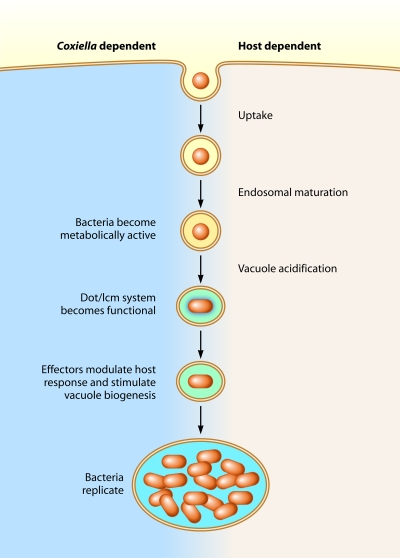FIG 1 .
Host and pathogen functions important for C. burnetii infection.
Infection by C. burnetii is initiated though subversion of host cellular processes. Small-cell variants of C. burnetii (red circles) that are metabolically inactive represent the infectious forms internalized by host cells. Host cellular processes direct endocytosis of attached bacteria, and the resulting CCV matures along the endocytic pathway through sequential membrane fusion events. Acidification of the vacuole is a signal that stimulates C. burnetii to become metabolically active and develop into replicative forms called large-cell variants (red ovals). It is at this stage that translocation of bacterial effector proteins into the host cell mediated by the Dot/Icm T4SS can be detected. Analysis of C. burnetii mutants with a defective Dot/Icm function suggest that the combined activities of the effectors translocated into host cells by the Dot/Icm system are essential for remodeling of the CCV to form a spacious and fusogenic vacuole that permits C. burnetii replication and for blocking innate defenses of the host, such as apoptosis. Thus, there are several Coxiella-dependent features of the vacuole that require effector translocation by the Dot/Icm system.

